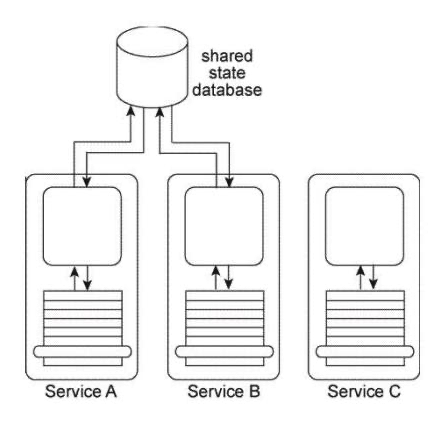Services A, B, and C are non-agnostic task services. Service A and Service B use the same shared state database to defer their state data at runtime. An assessment of these three services reveals that each contains some agnostic logic, but because it is bundled together with the non-agnostic logic, the agnostic logic cannot be made available for reuse. The assessment also determines that because Service A and Service B and the shared state database are each located in physically separate environments, the remote communication required for Service A and Service B to interact with the shared state database is causing an unreasonable decrease in runtime performance.  You are asked to redesign this architecture in order to increase the opportunity for agnostic service logic to be reused and in order to decrease the runtime processing demands so that performance can be improved. What steps can be taken to achieve these goals?
You are asked to redesign this architecture in order to increase the opportunity for agnostic service logic to be reused and in order to decrease the runtime processing demands so that performance can be improved. What steps can be taken to achieve these goals?
Definitions:
Q1: Using WS-AtomicTransaction you wrap 3 SOAP-based Web
Q14: Reader Accounts incur no additional Compute costs
Q18: Our service inventory contains the following three
Q34: Click the Exhibit button. <img src="https://d2lvgg3v3hfg70.cloudfront.net/C1984/.jpg" alt="Click
Q35: My service was consuming too much memory
Q52: Which of the following statements is true?<br>A)
Q54: A company is concerned with high space
Q76: A storage networking device has experienced a
Q76: What is the minimum number of domain
Q80: Only one of many servers has poor